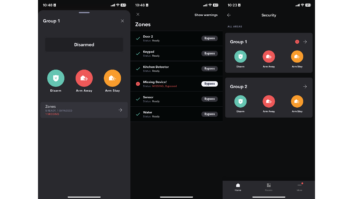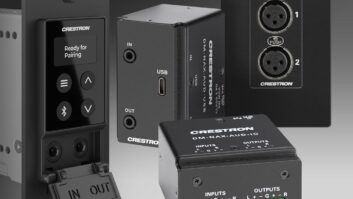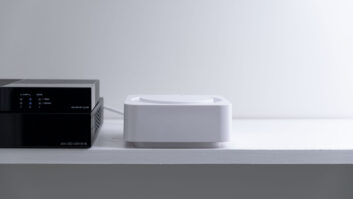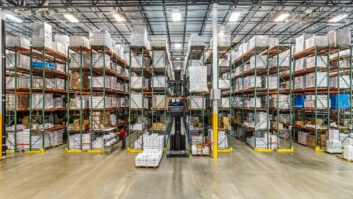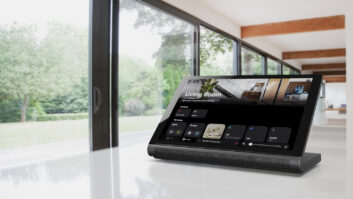A story about Crestron’s $500 “tax” on integrating third-party lighting and shades control products has gotten a lot of people worked up into a lather.
For some, the news harkens back to a heavy-handed “evil empire” image of “old Crestron” or simply “bad optics” from the control system purveyors in Rockleigh, NJ. It was a move that many felt did not fit the kinder, gentler approach taken by former hot-shot Crestron dealer John Clancy, who joined the company as VP of residential a year ago.
In a call with Clancy today, he acknowledged that the company’s motivation for adding the $500 fee came from frustration, essentially, that many Crestron dealers were not even attempting to sell Crestron lighting and shades over third-party products. It was also a response to frustration from dealing with end-user calls when homeowners couldn’t change lighting scenes without the help of a programmer.
“A lot of our dealers are just doing what they’ve been doing for years,” Clancy said, “not realizing that we’ve worked hard over the past year or so to improve the user experience.”

Crestron dimmers
Clancy and the Crestron team are trying to make the case that a full Crestron system “by far delivers the best overall user experience.”
“Now, an end-user can create and edit scenes and schedules on their own scenes from an iPad, without needing the CTP (Crestron Technology Professional) to come onsite, and these changes instantly propagate to the touchscreens and all user interfaces,” he said. “This is a very powerful user experience that no one else can deliver.”
On the other hand, Clancy said, when dealers blend Crestron control with third-party lighting and shade products, changes to the lighting control system’s scenes and scheduled events need to be done by the integrator/programmer, and these then need to be “correlated” on the automation system, whether it’s Crestron or a competing system.
As a former Crestron dealer, Clancy said, he remembers the challenges he faced when asked by clients to tweak scenes on their Crestron system, six months after the job was completed to their satisfaction. “I would kind of cringe when I got those calls, because the cost of doing that and because it often required me to touch the software in every single touchpanel on the project. It would be hard to even explain to the end user the cost of doing a change like that.”

John Clancy
To bolster his case for going “all Crestron,” Clancy also pointed to the lifetime warranty on Crestron lighting and shading and that CTPs make more money selling a complete solution. He noted, as well, that the panel density of Crestron dimming panels is double of what its “leading competitor” can deliver (meaning half the wall space) and that Crestron’s shade power supplies are “one-quarter the size” (of competitive products.) Also, Crestron systems can be monitored at no charge via myCrestron.com, and Crestron InfinetEX wireless lighting control does not require the use of repeaters (each device acts as a repeater, creating a mesh network.)
And while the fee was clearly meant as a motivation to sell more Crestron products into a job (which means more revenue for the company), the fee itself wasn’t a “cash grab,” Clancy said, because $500 is not considered “a lot of money” in a typical Crestron project budget.
“There were a few dealers who said we should charge $5,000 because $500 wasn’t enough to make the point,” Clancy said. “But it wasn’t about trying to penalize anybody. The idea was to raise the discussion with our dealers that our products work better together as a system.”
The decision to charge for a $500 activation key, in fact, involved many months of internal debate, according to Clancy.
“We were stuck,” he said,” “trying to make it more attractive for our dealers to sell even more Crestron lighting. We think we’ve done a really good job on the user experience side, on the profitability side, on the warranty side… but in a lot of cases our dealers aren’t even telling their customer about our product line. This at least starts the discussion that was not taking place, no matter how hard we tried to have that discussion with our dealers.”
The company has received emails from dealers that they can still work around the key (which only blocks IP connections from Crestron processors to third-party devices) in various ways (maybe via RS232 or serial connection).
“If they want to do that, that’s OK,” Clancy said. “We’re not trying to break anybody’s business.”
UPDATE: Lutron reached out after this story was published and wished to clarify that Lutron’s edit feature does allow end users to change scenes on a Lutron system, even when tied to a Crestron program. Crestron John Clancy then further explained that his point was no programmer is needed to create or edit scenes and schedules when using a Crestron-only lighting and automation system. With Lutron as the lighting portion, you can “edit” scenes from the Lutron app, but if you want to create a new scene or edit a scene’s name, you would need to create GUI buttons or change the text on existing GUI buttons on the control system side. “So yes, a homeowner may have access to some of these solutions with Lutron, any real changes still need to be reflected on the overlying control system which is not required with our complete solution,” Clancy explained.


